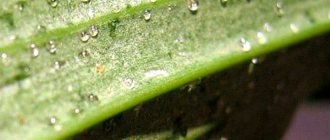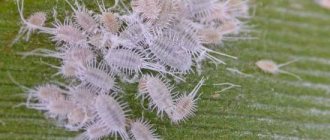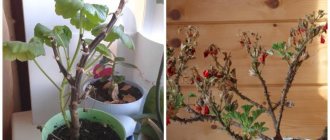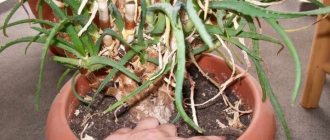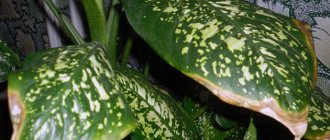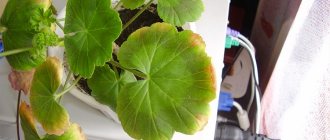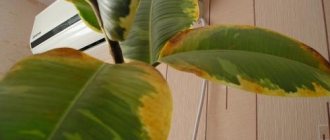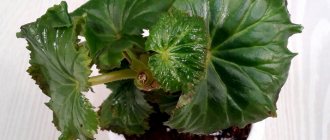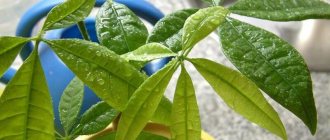Author: Elena N. https://floristics.info/ru/index.php?option=com_contact&view=contact&id=19 Category: Houseplants Published: May 19, 2014Last edits: January 11, 2021
- Chinese primrose / Primula chinensis
Botanical description
Primrose (lat. Primula) is a genus belonging to the family of Primrose plants, which has over 500 species of plants. Around the world, primroses grow in the Alps and throughout the rest of the world in temperate zones. The plant got its name due to its early flowering - almost immediately after the snow melts. Primulas are both annual and perennial rosette herbs. They bloom in pink, red and yellow flowers (other colors are also found). Flowers are usually collected in umbrella-shaped inflorescences, but can also grow one at a time. The fruit is expressed as a capsule. Plants are cultivated for their beautiful flowers; useful species are usually not grown indoors. Essential oils are obtained from the roots of spring primrose (medicinal) and large-chased primrose, which are used for medicinal purposes as an expectorant. Also, decoctions are prepared from the leaves and roots of primrose, which help with many diseases.
Primula (Primula) plant description, care and diseases, watering and propagation
Towards the end of winter, flowering primroses appear on sale. Flowers of various colors in the middle of a rosette of green leaves delight the eye with their spring freshness.
Primula or Primrose belongs to the Primulaceae family. This herbaceous plant grows in temperate climates and is found in Europe, Asia, North America, and China. More than 500 species of these annual and perennial herbaceous plants are known in nature.
Primrose leaves form a basal rosette. They are wrinkled and slightly fleecy or heart-shaped, on long petioles with jagged edges.
Flowers of various colors, solitary or collected in racemes or umbellate inflorescences. The flowering period of primrose is quite long.
Primula obconica
Primroses are grown as garden plants that bloom in early spring, hence their name. The healing power of the spring forest primrose has long been known among the people: tea from the flowers is consumed as a nerve-strengthening drink, diaphoretic and soothing decoctions are prepared, and young leaves are eaten as a salad in the spring. It is believed that one leaf of wild primrose replenishes the body’s daily need for...
Briefly about cultivation
- Flowering: Blooms in late April-early May.
- Lighting: bright diffused light.
- Temperature: 16-20 ºC, and during flowering – no higher than 16 ºC.
- Watering: moderate, through a tray, two days after the top layer has dried. During the flowering period, the substrate is watered as soon as the top layer dries.
- Humidity: normal for residential premises.
- Feeding: twice a season: in the twenties of June - with organic fertilizer, and at the end of the first ten days of August - with a solution of ammonium nitrate.
- Replant: every year after flowering.
- Substrate: a mixture of equal parts of humus, turf, deciduous soil and sand.
- Reproduction: seeds, cuttings and dividing the bush.
- Pests: aphids, spider mites.
- Diseases: gray rot, loss of buds, early yellowing leaves.
- Properties: the plant is poisonous!
Read more about growing primrose below.
Why do primrose leaves turn yellow around the edges?
Probable causes: drying out of the earthen coma, soil salinity. The optimal pH of the substrate for primrose is 5.0-6.0, that is, it should be slightly acidic. When watering a plant with hard water, the soil becomes alkalized. A clear sign is a white coating along the rim of the pot on the inside, a whitish coating on the soil itself. Ways to solve the problem: carefully transplant the flower into a suitable substrate, water it with soft water, you can add Kornevin to the water for irrigation once a week. Spraying won't hurt.
If the soil in a pot with a plant is dry, it is necessary to water it through a tray, maintain high air humidity, that is, spray it regularly. In summer this is done at least once a day.
Primrose care at home
Lighting
Primroses grow best at home in bright rooms, but not in direct sunlight, so windows on the east and west sides are considered good. If there is enough light on the northern windowsill, then this place will be optimal.
Temperature
Homemade primrose needs to be kept cool (from 16 to 20 °C), and during flowering the temperature should not rise above 16 °C in order for it to last as long as possible. If the windows in the apartment are old, pots with primrose can be placed between the frames.
Watering
Indoor primrose needs moderate watering (a couple of days after the top layer of the earthen mixture has dried). During the flowering period, the plant is watered more often - immediately after the soil on the surface of the pot dries. For irrigation, use only settled water and do not get water on the leaves - this will cause them to rot. To avoid this, it is better to water the primrose plant through a tray or by immersion.
- How hippeastrums bloom
Spraying
Caring for primrose at home does not require special manipulations to increase air humidity - primroses are not demanding of it.
Top dressing
Primrose in a pot needs feeding only twice - on the twentieth of June (organic fertilizers are applied, you can use a solution of bird droppings) and on the tenth of August (0.1% aqueous solution of ammonium nitrate).
Trimming
It is necessary to pinch off or cut off flower stalks with faded flowers in order to stimulate the flowering of the next primrose flowers and not to take away the strength of the plant. You also need to get rid of yellowing primrose leaves.
Primrose transplant
Primroses are replanted annually after flowering. As can be understood from the few feedings, the substrate needed is not very nutritious. The best option would be a mixture of equal parts of sand, humus, turf and deciduous soil. You can grow primroses in a mixture of sand and peat (one part each) and three parts compost. Soft-leaved primrose needs less acidic soil, so the substrate for it is composed of sand, turf and coniferous soil (one part each) with the addition of two parts of deciduous soil.
Dividing the bush
Primroses can be propagated after flowering has ended. Before dividing the plants, they need to be moved to a shaded place and watered periodically, just so that the soil does not dry out. When the stems begin to grow, the bushes are carefully removed from the pot and divided into 2-3 parts, after which they are planted in boxes at a shallow depth. The container with young bushes is covered with glass and placed in a warm room with bright, diffused light. When the primroses get stronger, they are transplanted into individual pots (9 cm in diameter), and after another 30-40 days - into larger pots (13 cm in diameter). Old leaves will need to be trimmed, and the plants will need to be fed once every two weeks with a solution of mineral fertilizers diluted by half.
Propagation by cuttings
Primroses are usually propagated this way if the plant has only one rosette. You need a shallow container into which you need to pour a small layer of peat, and on top - sand, in a layer of 2 cm. One leaf of the plant is separated along with the petiole and bud. The leaf plate itself must be cut in half with a sharp knife so that there are no torn edges. The primrose cuttings are planted in the prepared soil at an angle to a depth of 1 cm, the bud should “look” up. The container with the cuttings is placed in a room with a temperature of about 18 °C, the soil is regularly moistened. Within 80-100 days, the cuttings should take root, after which they are transplanted into individual pots with a substrate of deciduous and humus soil, with the addition of sand (4: 2: 1). By this time, the seedlings should have at least 3 leaves. In about six months the primrose will bloom.
- Reproduction and cultivation of sansevieria
Growing from seeds
Primrose from seeds is grown depending on the species. For example, conical primrose seeds are sown in mid-to-late spring, and soft-leaved primrose seeds are sown in early to mid-summer. To propagate primrose by seeds, the substrate is made up of equal parts of deciduous soil and sand. The seeds are sown on the surface, the soil is moistened with a spray bottle, covered with glass and placed in a bright place, protected from direct rays, with a temperature of about 18 °C. The container is ventilated from time to time and the soil is moistened. In about a week and a half, shoots should appear. A month after planting, the seedlings are transplanted for the first time, and the second time – another month later. After another month, the seedlings are planted in individual 9-centimeter pots, and then again in a larger pot. It usually takes about six months from sowing to flowering.
Virulence
After working with the plant, you should wash your hands, since contact with primrose leaves can cause skin irritation. For people with sensitive skin, it is better to work with the plant wearing rubber gloves.
Rules of care
Primrose is unpretentious to the soil and location; it blooms in early spring, when the ground is still saturated with moisture, and therefore can grow in sunny areas. But in the right place it will reveal all its beauty! The website flowery-blog.ru will tell you about the nuances of planting and care.
Planting primrose
Primrose is propagated by seeds, which can be sown directly into the ground before winter, or in indoor greenhouses in the spring. However, seeds for spring planting must undergo stratification, that is, spend a month in the refrigerator at a temperature of 6-8 degrees above zero. This artificial winter will speed up germination and imitate the natural life cycle. To do this, the seeds are mixed with sand and placed in the refrigerator. But sowing is done already at a temperature of 16-18 degrees, lightly sprinkling the sand mixture with soil and covering it with film to create greenhouse conditions. The signal for plants to pick is the appearance of the first pair of true leaves.
✿
Diseases and pests
Primrose leaves turn yellow. This can be caused by many reasons: too dry air in the room or increased air temperature. It can be caused by prolonged waterlogging of the soil, watering with soft water or excessive fertilizing. For the same reasons, the roots may turn brown.
Primrose fell ill with gray mold. To prevent this from happening, water should not get on the leaves, and primrose should not be grown in a room with high air humidity. The soil surface should dry out slightly between waterings.
Primrose flowers fade quickly. This happens if primrose blooms at air temperatures above 16 °C (optimally 12-14 degrees Celsius).
Primrose sheds its buds. The reason is too high an air temperature, insufficient watering or too dry air.
Primrose pests. Primulas most often suffer from aphids or spider mites, and growing in high temperatures and dry air increases the likelihood of damage.
- Parsley: growing on the windowsill and in the garden
Primrose indoor
The article talks about the houseplant - primrose, garden primrose diseases and pests photo , its types. Home care - how to water, propagate. Flower diseases and pests. Video and photo.
Primroses got their name from the fact that they bloom in early spring. This plant has many useful properties. For example, tea made from it is prescribed to strengthen the nervous system; it is a kind of sedative. Young primrose leaves can be used as a salad. Experts say that just one primrose leaf can meet the body's daily requirement for vitamin C. Find out what other foods contain vitamin C.
We should not forget that indoor primrose can often lead to an allergic reaction. It happens that after working with primrose, flower growers complain of irritation on their hands. Based on this, from time to time it is better to sacrifice the beauty that this flower creates indoors and hide it away, garden primrose diseases and pests photo , if there are small children in the house.
Kinds
Chinese primrose / Primula chinensis
An herbaceous perennial, reaching a height of about 30 cm. The leaves are petiolate, collected in a rosette, rounded-heart-shaped, up to 15 cm long, the edges of the leaf blade are serrated. The inflorescence is umbellate. The flowers reach 4 cm in diameter, come in pink, red, white or orange, and the petals can be wavy. In order for the plant to bloom next year, after flowering it is necessary to arrange an artificial dormant period.
Primula kewensis
The representative of the species is a herbaceous perennial with rosette leaves. The leaves are petiolate, up to 20 cm long, have a rounded heart-shaped shape, with a jagged edge and a white coating on the upper side of the leaf blade. The umbrella-shaped inflorescence rises on a 30-centimeter peduncle. The flowers are small (about 1 cm in diameter), have a pleasant aroma, and are yellow in color.
Primrose soft or soft-leaved / Primula malacoides
This species is native to China. A herbaceous annual, reaching a height of just under 0.5 m. The leaves are rosette, petiolate (petiole up to 8 cm), can be oval or heart-shaped, up to 20 cm long, the edge of the leaf is serrated. There may be several peduncles, without leaves, with 3-6 whorls of 10-20 flowers each. The flowers are fragrant, can be pink, white or red, with a yellow spot in the throat. The flowering period occurs in mid to late winter.
Primula obconica / Primula obconica
Another Chinese species, but a herbaceous perennial, reaching a height of just over 0.5 m. The leaves are petiolate (petiole up to 10 cm), pubescent, rounded (the base of the leaf is heart-shaped), rosette, reaching 10 cm in length, the edge of the leaf is wavy. The peduncle reaches 20-25 cm, without leaves. The inflorescence is umbellate. The flowers are fragrant and come in dark red, blue, white or pink. There are varieties that do not cause allergies.
Common primrose / Primula vulgaris
Also found under the name stemless primrose (Primula acaulis). This species has oblong, wrinkled leaves. The flowers are quite large, come in red, yellow or blue, and grow from the center of a leaf rosette. A large number of hybrids have been bred in culture.
Primrose indoor
The article talks about the indoor plant - primrose, and its types. Care at home - how to water, propagate. Flower diseases and pests. Video and photo.
Primrose "Primula" (or as it is also called, Primrose), usually appears on sale at the end of winter. About 500 varieties of this plant are known, distinguished by their unique freshness, creating a spring mood.
Primroses got their name from the fact that they bloom in early spring. This plant has many beneficial properties. For example, tea made from it is prescribed to strengthen the nervous system; it is a kind of sedative. Young primrose leaves can be eaten as a salad. Experts say that just one primrose leaf can fill the body’s daily need for vitamin C. Find out what other foods contain vitamin C.
Do not forget that indoor primrose can often cause an allergic reaction. It happens that after working with primrose, flower growers complain of irritation on their hands. Therefore, sometimes it is better to sacrifice the beauty that this flower creates...
Read more
How to water a flower and feed it
During the flowering period of the primrose, the soil in which it is planted must always be wet, but watering it too much (overwatering) is also prohibited. If the amount of moisture is excessive, the roots of the plant may be damaged. At the end of flowering, the primrose is not watered very much, but not too little. Here we need a “golden mean”.
Like many other plants, indoor primrose lacks nutrition. It is carried out with a fertilizer solution with microelements. The solution should not be strong. Fertilize before the flower opens its buds. Feeding is not recommended before they appear, as this will only promote leaf growth.
Fertilization occurs until the end of flowering with an interval of 14 days. While flowering is over, primrose is in most cases planted in open ground.
As soil for indoor primrose, a mixture is used that contains one part each of peat and leaf soil and sand. From time to time one more part of turf sand is added. A flower requires good drainage.
